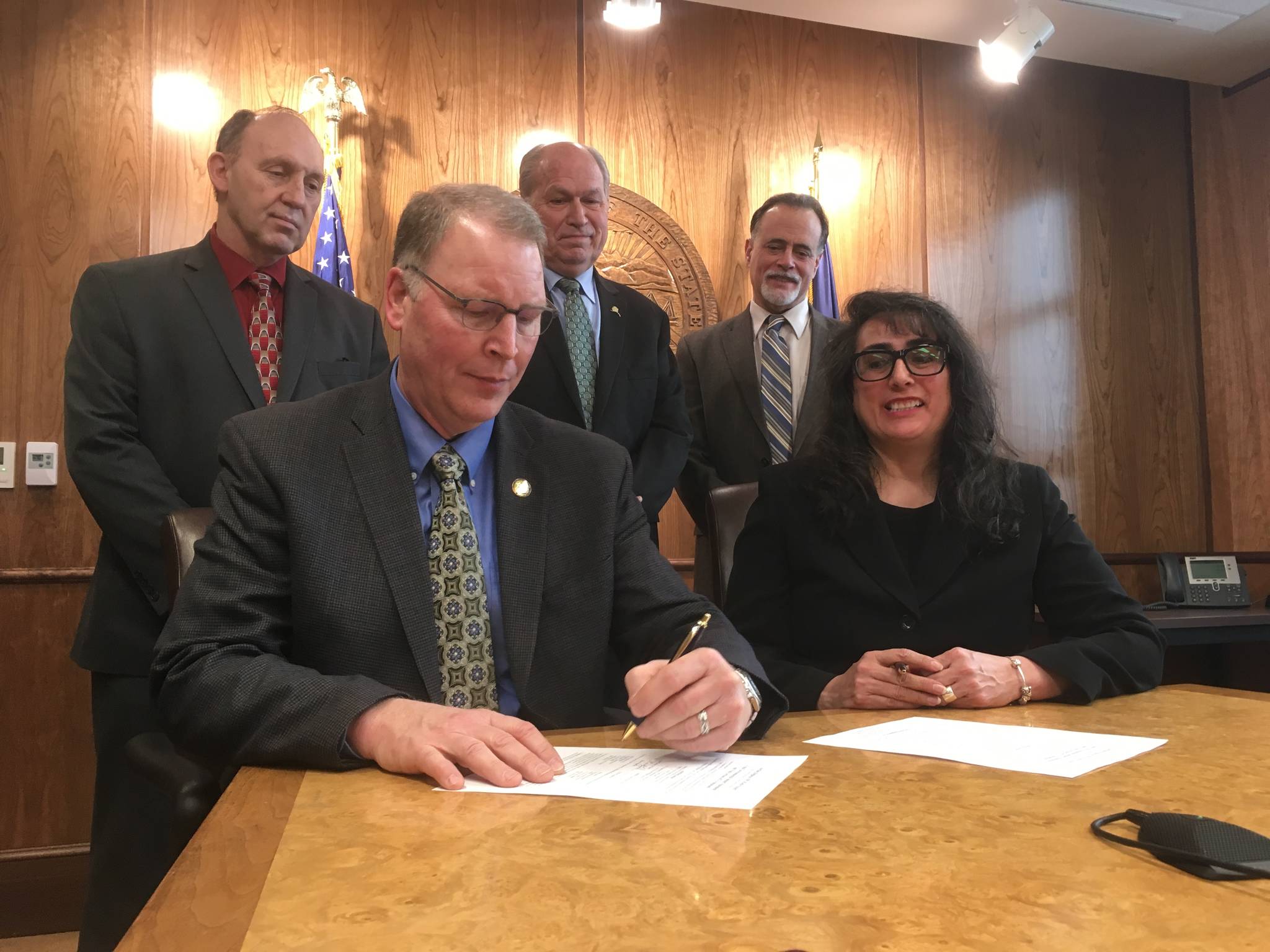The final environmental permitting document for the long-planned Cooper Landing bypass ditches a controversial decision to relocate the Sterling Highway around Cooper Landing via a new crossing of the Kenai River, instead putting the highway farther in the hills above town.
On Wednesday, representatives of U.S Federal Highway Administration and Alaska Department of Transportation and Public Facilities — the federal and state agencies that have collaborated since the 1970s on the highway relocation, formally known as the Sterling Highway Milepost 45-60 project — signed its final Environmental Impact Statement in a ceremony in Juneau. The effort to take the Sterling Highway around rather than through Cooper Landing, where the road becomes winding, narrow, restricted to 35 miles per hour and clogged with RVs, boat trailers and passenger vehicles during the summer months, gave rise to “one of the longest active environmental documents in the United States,” according to a press release from Gov. Bill Walker. DOT and the Federal Highway Administration released previous draft Environmental Impact Statements, which were never signed or finalized, in 1982 and 1994.
“The project was particularly challenging to develop due to its proximity to the Kenai River and Lake, Kenai National Wildlife Refuge, and Resurrection Pass National Recreation Trail, as well as steep terrain, nearby historic and cultural resource sites, and limited right-of-way,” stated DOT’s announcement of the signing.
Of the four paths that the agencies unveiled in April 2015, Wednesday’s EIS selects the Juneau Creek route as a preferred alternative, changing the preference DOT and the Highways Administration announced in December 2015. The route identified then, called G-South, would leave the existing Sterling Highway around milepost 52 and cross the Kenai River over a new bridge about a half-mile to the east, avoiding protected land in the Kenai National Wildlife Refuge that would require crossing approval from the U.S Congress.
Almost as soon as it was announced, various groups including the Kenai Peninsula Borough, the governments of the Kenaitze and Salamatof tribes, the Kenai River Special Management Area Advisory Board, the Kenai River Sportfishing Association, the governor and the Alaska Congressional delegation all voiced opposition to the selection. These groups favored the Juneau Creek route — which wouldn’t require a new bridge and would pass further from the river by running further north into the Refuge — citing concerns about the possibility of river pollution from wrecks on the G-South route, especially of tanker trucks.
The Juneau Creek route will be possible without congressional approval thanks to a land trade, in which the U.S. Fish and Wildlife Service will give the prospective highway area to the Alaska Native corporation Cook Inlet Region Incorporated in exchange for CIRI land on the Killey River.
In August 2017, the two agencies reconsidered the G-South decision and announced that the state rather than federal Department of Transportion would lead environmental permitting for future projects under the National Environmental Protection Act, which defines the EIS process. For the Cooper Landing bypass project, however, the Federal Highway Administration remains the lead permitting agency and will make the final decision about the Cooper Landing bypass route, said DOT spokesperson Shannon McCarthy.
“But the other projects, from this point forward, we will have primacy over,” McCarthy said.
The final EIS will be publicly posted on DOT’s website by early next week, starting a public comment period that will last until April 16. The choice of the Juneau Creek alternative may still change as a result of those comments — the Highway Administration will finalize the route choice in a record of decision expected in May, McCarthy said.
Reach Ben Boettger at bboettger@peninsulaclarion.com.

